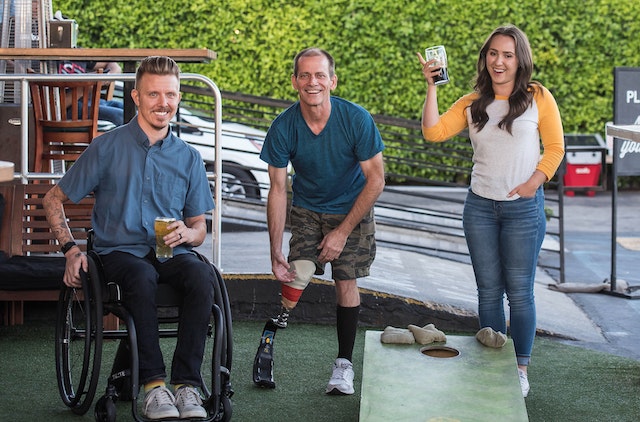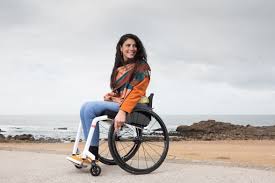Imagine unlimited movement. A place where disabled individuals can move freely. Combatable wheelchair innovation enables this goal.
Traditional wheelchairs restrict daily mobility too long. Due to their size and weight, outmoded equipment frequently inhibited disabled persons. Combatable wheelchairs change mobility.
Combatable wheelchairs’ remarkable evolution and key benefits will be discussed in this blog article. These innovations have given wheelchair users independence. We’ll share their stories.
You’ll love combatable wheelchairs’ revolutionary potential!
The influence of traditional wheelchairs on disabled individuals
Traditional wheelchairs have helped disabled persons move. The impact of these wheelchairs can be difficult and restrictive for those who use them daily.
Traditional wheelchairs struggle to adapt to diverse terrains and settings. Climbing curbs or crossing uneven areas becomes difficult and requires help. Dependence affects independence and limits freedom and accessibility.
Furthermore, lightweight wheelchair foldable users’ physical fatigue must be ignored. Design flaws and heavy weight can cause discomfort, muscle fatigue, and long-term health issues. These factors lower the quality of life and well-being of typical wheelchair users.
Bulky wheelchairs emphasise a person’s limits rather than their abilities, reinforcing disability stigmas. This frequent reminder might cause self-consciousness and marginalisation.
Traditional wheelchairs fail to suit wheelchair users’ different needs and objectives. Combatable wheelchairs have revolutionised disability mobility, thankfully. Combatable wheelchairs provide independence, comfort, versatility, and inclusivity with unique features developed to meet these obstacles.
In conclusion, breaking out from traditional designs helps wheelchair users navigate their environment and participate more in society.
Combatable wheelchair evolution
Combatable wheelchairs have advanced greatly. Over time, technology and design have made these mobility devices efficient and adaptable for disabled persons.
Wheelchairs are no longer hefty and inflexible. Modern combatable wheelchairs have many new features that improve manoeuvrability and independence. These technological marvels meet lightweight wheelchair foldable has different needs with lightweight frames and changeable seating.
Using carbon fibre and titanium alloys is a major advancement. These materials strengthen combatable wheelchairs and lower their weight, making them easier to manoeuvre on different terrains.
Additionally, ergonomic improvements have improved wheelchair comfort. Seat cushions, backrest angles, and armrest locations can be adjusted for customised support. This adaptation allows people to sit for long periods without straining.
Combatable wheelchairs with sophisticated technologies are another innovation. Connecting smartphones and tablets over Bluetooth allows for seamless communication, entertainment, and environmental control.
Many combatable wheelchairs have improved suspension systems that absorb shocks from external objects and uneven ground. This smooths the ride and prevents jolt and vibration injuries.
In recent years, combatable wheelchairs have become more aesthetically pleasing and functional because to inclusive design concepts. Since personal style should never be compromised due of a wheelchair, manufacturers provide a variety of customisation possibilities, from colourful colour choices to sleek frame designs.
Combatable wheelchairs will see more advances as technology advances at an unparalleled rate. From propulsion system improvements to AI integration,
Key Combatable Wheelchair Features and Benefits
With their many features and benefits, combatable wheelchairs have transformed mobility for disabled persons and improved their quality of life.
The adjustable seating system lets users customise their wheelchair to their needs and tastes. This optimises comfort and support, eliminating pressure sores and discomfort during continuous use.
Uneven ground and road bumps are absorbed by the sophisticated suspension system. This considerably enhances stability and reduces vibrations, making lightweight wheelchair foldable make smoother and less tiring.
Combatable wheelchairs also have lightweight, robust materials that make transportation easier than before. Foldable frames and detachable parts make these wheelchairs easy to store and carry.
Many combatable wheelchairs include swivel wheels and easy joystick controls. These make it easy for people to navigate confined spaces and busy areas, providing them more flexibility to explore.
Combatable wheelchairs often have customisable extras like cup holders, storage pockets, and power-assisted choices for those who need an extra push.
Combatable wheelchairs promote inclusivity and mental empowerment beyond physical comfort. These ingenious technologies remove mobility restrictions, allowing disabled people to engage more completely in daily activities like shopping and outdoor trips with family and friends.
Combatable wheelchairs have improved the lives of disabled persons by offering adjustable seats, sophisticated suspension for smoother rides over uneven terrain, and lightweight, durable materials for simple travel.
These revolutionary technologies improve physical comfort, mental well-being, and inclusion by allowing people to engage more in daily activities.
Personal wheelchair user stories
Personal accounts from wheelchair users demonstrate how combatable wheelchairs have transformed mobility for disabled persons. These firsthand tales demonstrate how revolutionary these ingenious technologies are.
One person’s combatable wheelchair helped them pursue photography. Their manoeuvrability and stability allowed them to penetrate varied terrains and capture spectacular sights previously unavailable.
Another customer explains how their combatable wheelchair allowed them to hike and camp. They thank their newfound mobility for giving them the freedom and independence to enjoy nature’s splendour.
These personal stories demonstrate combatable wheelchairs’ physical improvements and emotional and psychological effects. Users report enhanced confidence, self-esteem, and purpose as they are no longer limited by standard wheelchairs.
Combatable wheelchairs have transformed disabled mobility. Combatable wheelchairs provide greater freedom, independence, and accessibility than traditional wheelchairs due to advanced design features like all-terrain capabilities, manoeuvrability, durability, comfort, and customization.
We should expect more revolutionary assistive device developments like combatable wheelchairs as technology advances and inclusivity grows. The future holds immense promise for improving disability quality of life worldwide by breaking down barriers one step at a time!









